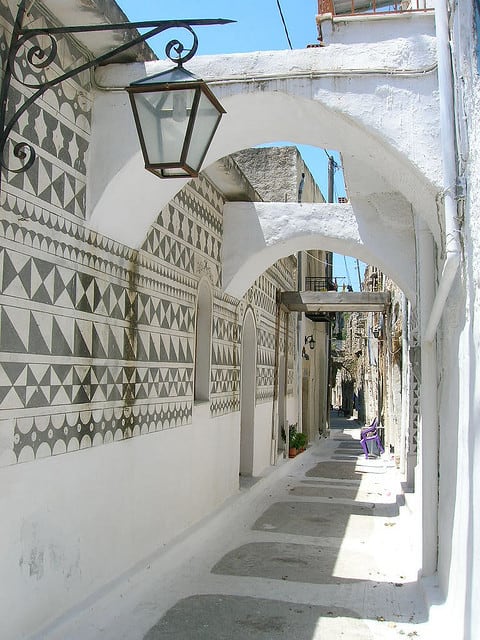Pyrgi is a picturesque medieval village on the beautiful Greek island of Chios known as the 'painted village' on account of its impressive architecture, featuring geometrical, primarily black and white motifs that decorate the facades of the buildings.
Chios is the fifth largest of the Greek islands, situated in the northern Aegean Sea and is well-known as the home of epic poet Homer.
Since antiquity, the island has drawn visitors with its mastic, the natural resin prized for its aromatic and healing properties.
Pyrgi is the largest of the villages in Mastichochoria - the southern part of Chios where the mastic is produced.
Even through major earthquakes that have shaken the island, the medieval village remains intact today as it was six or seven centuries ago, characterised by its narrow streets, beautiful balconies, serried stone houses, ornamented with the geometrically designed wall-embellishments called 'xysta' and garlands of small tomatoes hanging to dry from them.
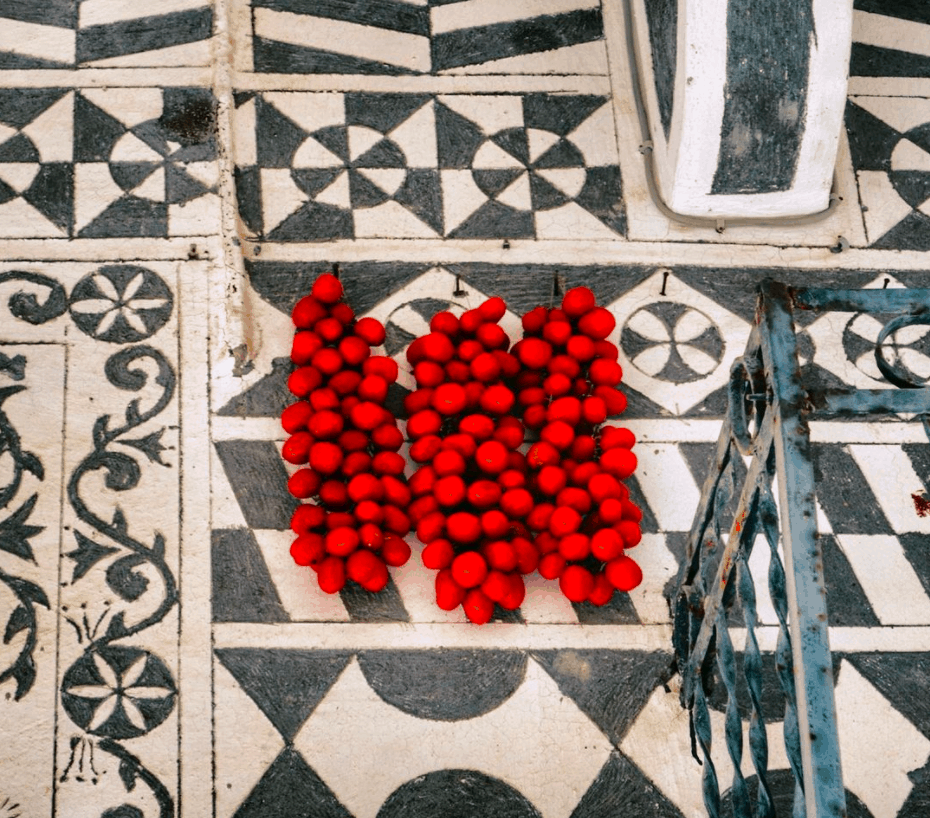
Xysta and Ethnomathematics
The perfectly symmetrical geometric patterned xysta have captured the attention of mathematicians and ethnomathematics researchers in their quest to understand and recognise mathematical knowledge in the Middle Ages.
Ethnomathematics is a relatively new research field and is the study of the relationship between mathematics and culture.
Ethnomathematical research provides a holistic approach to mathematics, showing that all cultures use mathematical notions and practices regardless of whether or not this mathematics constitutes 'school maths' as defined by the traditional academic approach.
Ethnomathematical research has revealed mathematical concepts behind interesting artefacts and traditions of numerous cultures from around the world.
In addition to xysta, examples of ethnomathematics include the ratios, patterns and symmetry in Japanese origami; and in the khipus or quipus of the Incas, which provided an ancient system of mathematics and accounting that was based on an elaborate system of tying knots in coloured cotton or camelid cords.

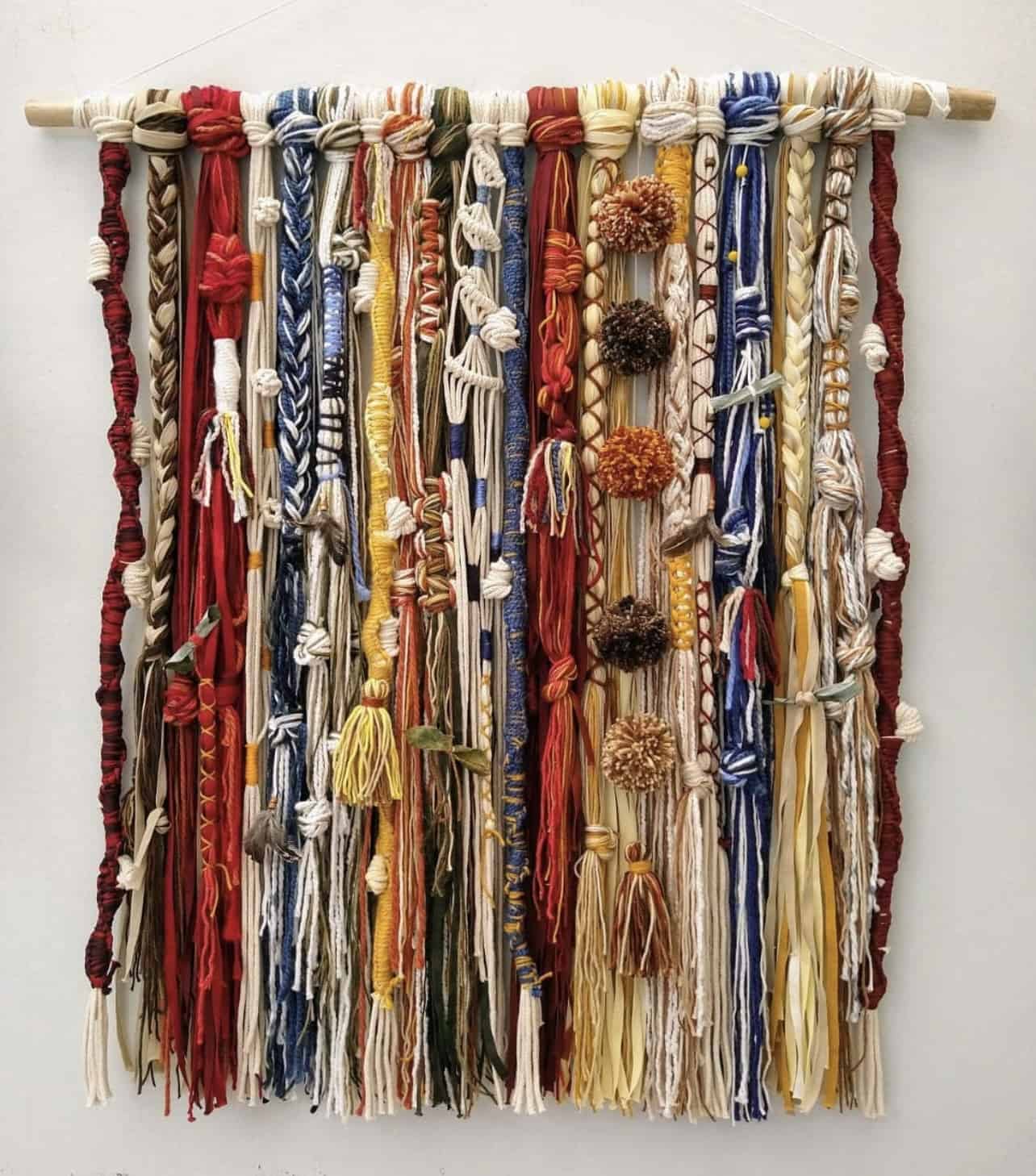
Mathematician Paulus Gerdes also provided various examples concerning mathematical ideas incorporated in the richly geometrical design processes of artists in Mozambique as well as in other places in Africa.
He maintained that if the 'hidden mathematics' of Mozambique - which he defined as "frozen" mathematics - were "defrosted", the culture would be revealed, making it clear that its people have produced mathematics, just as other cultures have.
So intrigued was Professor of Didactics of Mathematics Charoula Stathopoulou by the medieval mathematics behind the traditional patterns that she witnessed upon visiting Pyrgi of Chios that she decided to stay to explore further.
"Having visited Pyrgi a few times between 1993 and 2005, I had the sense that the geometrical patterns that the inhabitants create on the façades of their houses were of mathematical interest," states Professor Stathopoulou in her ensuing research paper entitled 'Traditional Patterns in Pyrgi of Chios: Mathematics and Community'.
"The summer of 2005 I decided to stay in Pyrgi in order to study not only the kind of patterns but also the reasons why this tradition began and developed here."

Construction of Xysta
Xysta (meaning scratches) of Pyrgi are a designing tradition that concerns the construction of mainly geometrical patterns on building facades by scratching plaster.
Xysta (singular xysto; plural xysta) are constructed by traditional craftsmen who first plasters the building facade in two layers: the first makes the surface flat, while the second provides the base for xysta.
While the material is fresh, a layer of whitewash is applied. The craftsmen subdivides the wet surface into zones, and in every zone appropriate patterns are designed. The pattern is then scratched with a fork into the whitewashed surfaces. The patterns that appear are the result of the contrast between the scratched whitewash and the plaster.
The primary materials used for this procedure are different kinds of sand, mortar, whitewash and cement, depending upon the time period of construction.
The craftsmen create the intricate geometric and perfectly symmetrical patterns using only two, and sometimes at maximum, three instruments: a lath, dividers with two points, and a fork.
The lath is used to separate the area of the wall into the separate 'zones' and for the construction of straight lines.
The dividers are used for the construction of circular figures, while the fork is used to scratch selected areas of the patterns in a way so that the scratched areas become darker in colour and the unscratched areas remain white.
According to some sources, this technique was most probably learned from the Genovese during the Genoese domination in Chios between 1346 to 1566.
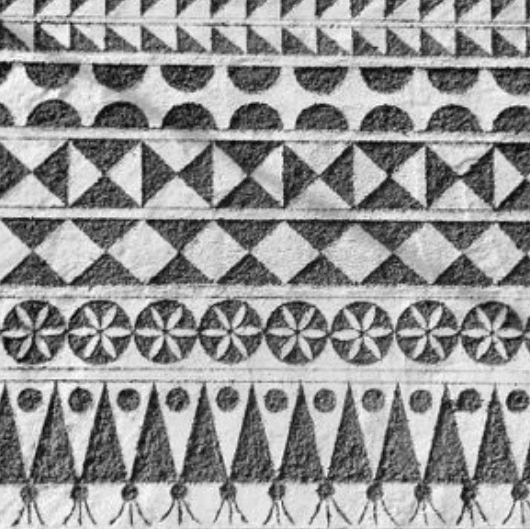
The patterns of the xysta, they say, are derived from the carpets that the Genovese people used to hang on the outside of their houses for decorative purposes.
It is thought that after the Genovese left Pyrgi, this practice of decorating the facades with carpets was replaced by decorating them with patterns on the plaster.
Others, however, believe that the patterns of Cappadocia in Turkey provided the inspiration for the xysta, with the geographical location of the Aegean island of Chios supporting the influences of both the East and of the West.
How the Village Architecture Contributed to the Unique Design Tradition
The village was built like a fortress due to the enemy raids throughout the 16th century. The houses were made out of stone and attached together to form a wall around the settlement.
The houses have no windows or doors on the external side, so they only have a view into the internal side of the settlement. Since the houses are narrow and dark, the inhabitants spend a lot of time outside, with the entire life of the population happening in the central square and its surrounding streets.
"The women meet their friends and their neighbours and do the household duties outside their homes, for example on the sidewalks in front of their houses, because there are no yards," says Professor Stathopoulou.
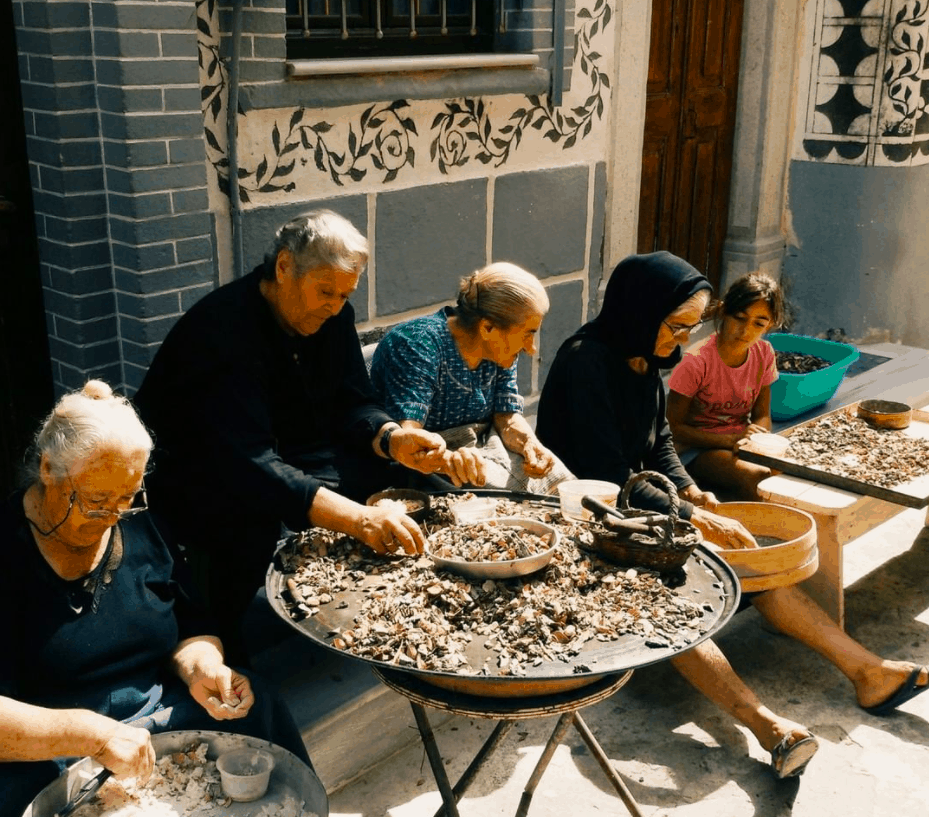
"At the time I was there I saw women preparing fresh beans, threading tomatoes—in order to dry them—and undertaking any other kind of activity they could do outside."
It makes sense, therefore, that fact that the villagers spent so much time outside their houses doing their everyday duties influenced the manner by which they beautified the building exteriors.
In the earliest phases of the xysta tradition, the people who had the ability to plaster their houses and create xysta were among the wealthier people of Pyrgi.
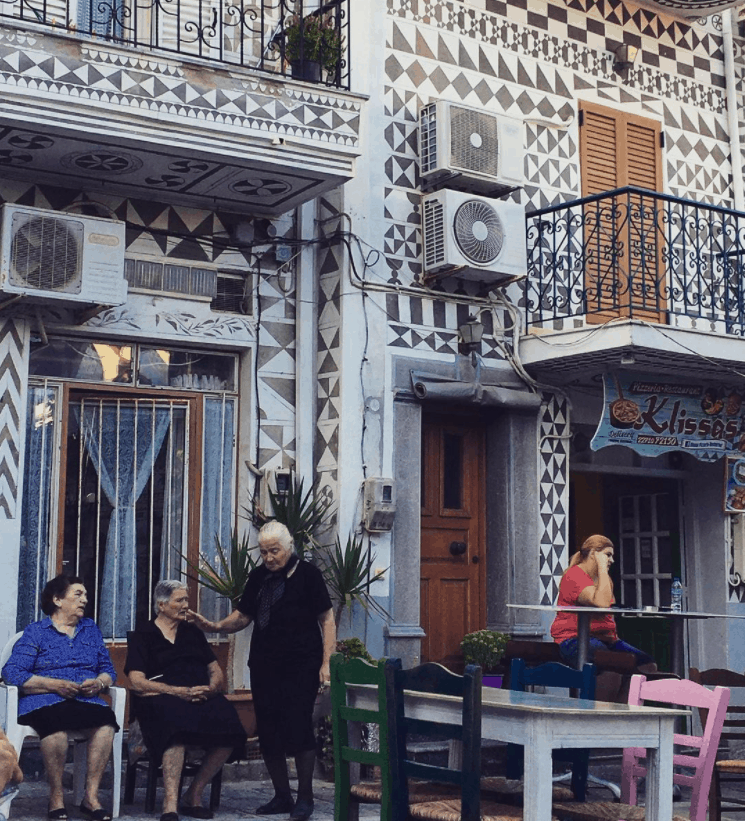
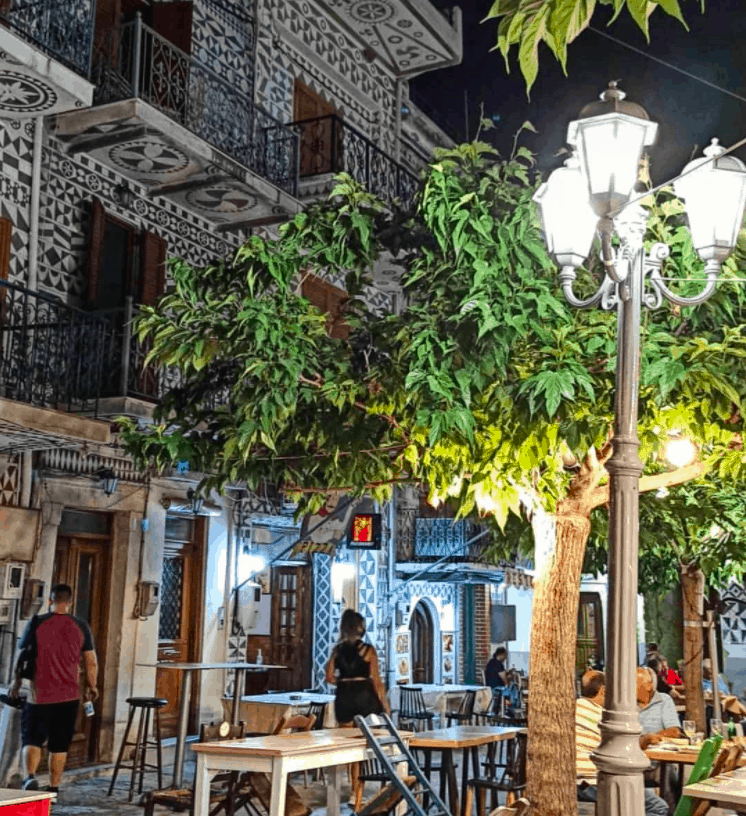

The History of Xysta and the evolution of its style
Architect-researcher Maria Xyda has classified the technique, the material, the patterns and the style, in general, into five categories over time.
The patterns of the first period xysta of the first period were only limited geometrical themes, and the plaster was made of river sand, lime and straw. The size of the patterns was similar to the size of the stones used as structural units.

Next came xysta with influences from the East, with a rich diversity in patterns. Another characteristic of this period was the tassels they had at the bottom, which represented carpets. Although the patterns are different from the first period, the material used was the same.
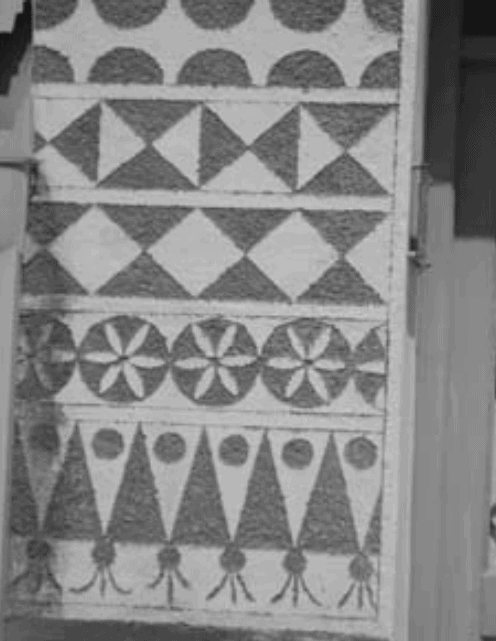
Xysta of 1930-1940 reflect all the previous influences. The material is not always the same since sea sand and cement were added.
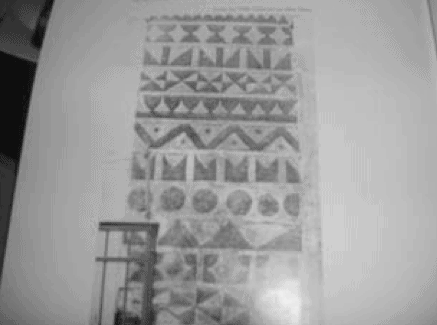
The patterns of the xysta after the Second World War became increasingly complicated, and the use of colours was abandoned. The material used was the same except for the sand, which was now only from the sea, which is very close to the village.

Contemporary xysta patterns are black and white. They aren't organised in units, but are more complicated and, in contrast with the previous periods, they extend over the entire surface of the building facades. Furthermore, the patterns are borrowed from some other traditions of craftsmanship, such as carpentry and blacksmithing. The materials used now are cement, a different type of sand that they can buy from the market, lime, and cinder.
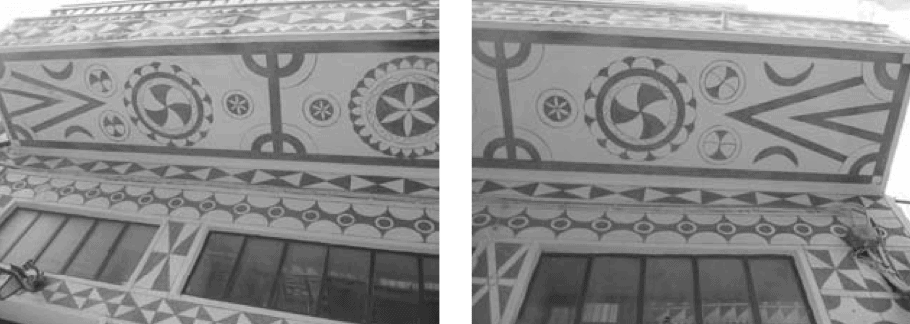
To this day, the inhabitants of Pyrgi strongly associate the xysta with their self-identity, using the decorative patterns as a way to ensure the continuity of their design tradition.
The Medieval Mathematical Concepts of Xysta
After visiting Pyrgi several times as a tourist, Professor Stathopoulou decided that studying xysta could be of great interest in the context of the connections between culture and mathematics.
"This special tradition of xysta was important not only from the side of the construction and designing but also from the side of culture and mathematics," she says.
"The majority of the patterns were geometrical constructions that were made by two simple instruments."
Xysta, and the mathematical ideas incorporated into the patterns, were the products of traditional craftsmen, who acquired this intellect through experience rather than by learning mathematics at school.
By examining a few indicative patterns, a number of mathematical ideas can be identified, including the construction of geometrical shapes; the mathematical notion of transformation, in particular isometry such as translation, rotation and reflection; the subdivision of the facade surface into sets which are further separated into subsets.
In addition, in every motif there are two axes of symmetry; one vertical, the other horizontal.
Also the construction of circles (circular sectors), rectangles, and interstices between lines and circles are important mathematical ideas.
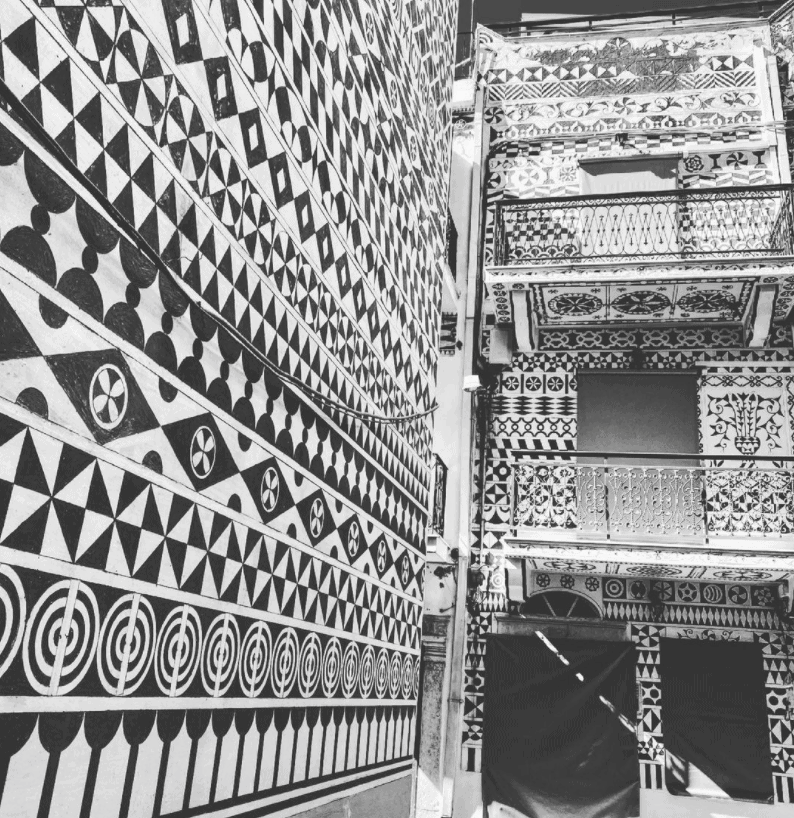
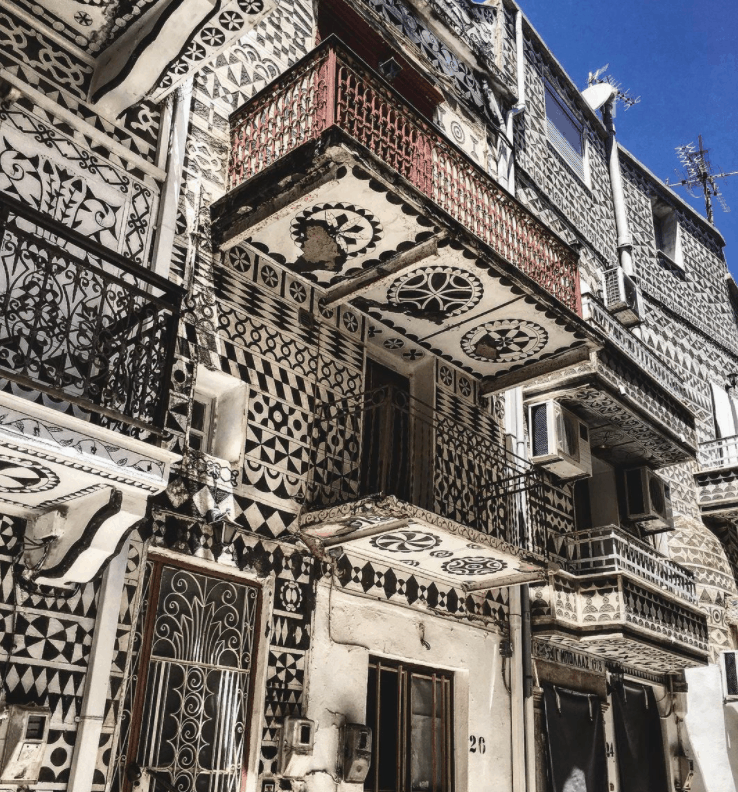
The Mathematical Masterminds of Medieval Pyrgi
Xysta of Pyrgi are an interesting study of medieval mathematics and geometry and a step towards understanding mathematical knowledge in the Middle Ages.
Furthermore, the history and design tradition of xysta provides evidence that each culture's mathematics is intrinsic to the corresponding cultural environment.
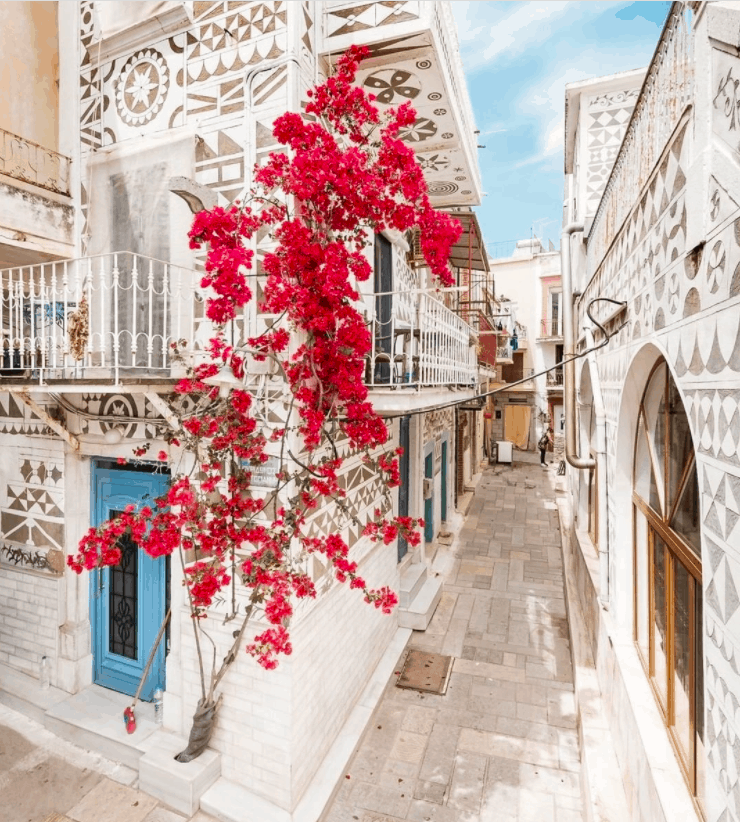
Ethnomathematics has everything to do with all this, as Brazilian mathematics educator and historian of mathematics, Ubiratan D'Ambrosio once said.
"As a research program, ethnomathematics invites us to look into how knowledge was built throughout history in different cultural environments. It is a comparative study of the techniques, modes, arts, and styles of explaining, understanding, learning about, and coping with the reality in different natural and cultural environments.
"In historical terms, this is an analysis of the generation of knowledge, of its intellectual and social organisation, and of its diffusion."
It is well-known that the academic mathematicians of ancient Greece made a hugely significant contribution to world thought and all practical subjects which depend on that intellectual basis, from geometry to engineering, astronomy to design.
However, the ancient inhabitants of the tiny village of Pyrgi on the island of Chios present to us their mathematical brilliance in a more unexpected way – through their design tradition, patterns called xysta.
Add a sprinkle of mastic to your everyday life




